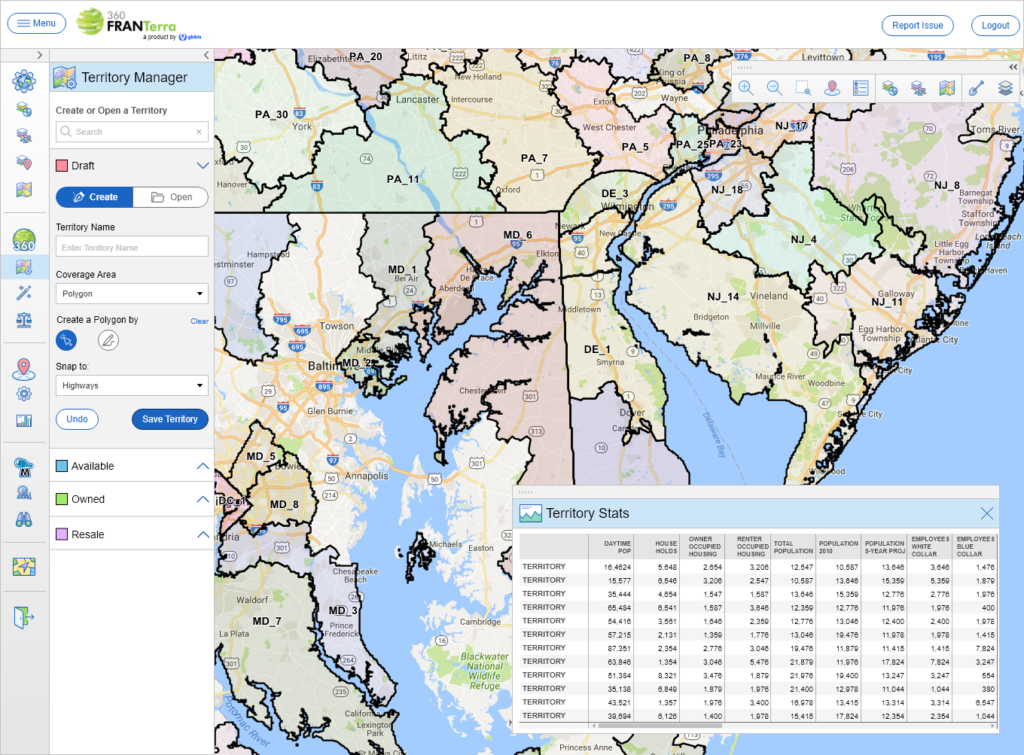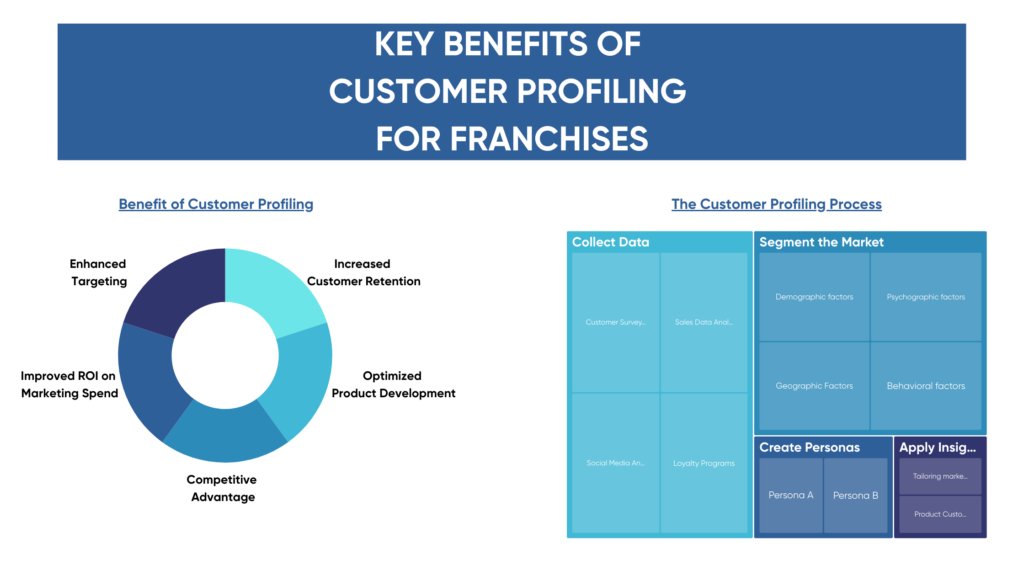Proper territory design is crucial for ensuring franchisor and franchisee success, because it ensures optimal market penetration without oversaturation or excessive internal competition. It involves defining geographic boundaries within which franchisees operate, ensuring they have adequate market potential without encroaching on fellow franchisees. Effective territory design not only promotes profitability but also fosters a fair and competitive environment. Here, we delve into the principles and strategies that franchisors can employ to design territories that are both profitable and equitable.
Understanding Market Potential
The cornerstone of effective territory design is a deep understanding of market potential. This involves analyzing demographic data, economic trends, and consumer behavior within different geographic areas. Franchisors should consider factors such as population density, average income, spending habits, and the presence of competing businesses.
A territory with high population density and robust economic indicators might support a higher number of franchises or a larger franchise operation than an area with less promising metrics. The key is to align the territory’s potential with the right type and size of franchise operation.
With a clear grasp of market dynamics, the next logical step involves leveraging technology to capture all the factors that drive franchise success.
Utilizing Geographic Information Systems (GIS)
Technology plays a pivotal role in modern territory design. Geographic Information Systems (GIS) allow franchisors to visualize data spatially, enabling the analysis of market trends, demographic shifts, and competitive landscapes on a map. This visualization helps in making informed decisions about where to establish new franchises and how to define their boundaries.

GIS technology can also simulate various scenarios based on potential changes in the market or expansion strategies, providing a dynamic tool for planning future growth.
Having mapped out potential markets, we must now consider the strategic deployment of territory exclusivity to prevent internal competition.
Ensuring Territory Exclusivity
One of the principles of fair territory design is ensuring that each franchisee has exclusive rights to a specific area. This prevents internal competition, which can dilute brand impact and franchisee revenues. Exclusivity also incentivizes franchisees to maximize their efforts in marketing and customer service since they are assured that any benefits of their hard work will not be undercut by another franchisee nearby.
It’s crucial, however, that franchisors balance exclusivity with market realities. Overly large territories can lead to under-servicing of potential customers, while too small territories might not be viable.
Territorial exclusivity sets the stage for our next crucial consideration: balancing equity among all franchisees.
Balancing Equity Among Franchisees
Equity in territory design means ensuring that each franchisee has an equal opportunity for success. This doesn’t necessarily mean that every territory must be identical in size or market potential but that the differences between territories are justified by the opportunities they offer.
To achieve this, franchisors must consider the unique aspects of each location. What works in an urban environment might not suit a rural setting and vice versa. The key is to adapt the franchise model to fit the territory while maintaining a level playing field.
Achieving a balance prompts us to look forward, laying the groundwork for strategic expansion and scalability.
Planning for Growth
Effective territory design must not only address current market conditions but also anticipate future growth. This involves leaving enough room for franchisees to expand their operations without stepping on each other’s toes. As markets evolve and franchisees succeed, there will be opportunities and demands for expansion.
Franchisors should have a strategic plan in place that allows for the scaling up of operations within designated territories or the creation of new ones without disrupting the existing franchise network.
As we contemplate growth, it’s imperative to also understand the legal frameworks that underpin effective territory design.
Legal Considerations
Territory design must also consider legal considerations. This includes compliance with local zoning laws, business regulations, and any franchise-specific legal requirements. It’s important to ensure that the territory boundaries are legally defensible and in accordance with all relevant laws and regulations.
With legal strategies defined, our final step involves the ongoing management and refinement of our territory design.
Continuous Evaluation and Adjustment
Territory design is not a set-it-and-forget-it exercise. Markets change, new competitors emerge, and economic conditions fluctuate. Successful franchisors continuously monitor the performance of their territories and are prepared to adjust as needed.
This might involve redrawing boundaries, offering additional support to underperforming franchisees, or even buying back territories if necessary. The goal is always to maintain a healthy balance between supporting individual franchisees and protecting the brand.
Conclusion
Effective territory design is both an art and a science. It requires a careful blend of market analysis, technological tools, strategic thinking, and ongoing management. By adhering to the principles of understanding market potential, ensuring exclusivity, balancing equity, planning for growth, and continuously adjusting to market conditions, franchisors can create a franchise system that maximizes profitability while maintaining fairness and competitive vitality. This strategic approach not only benefits the franchisor and franchisees but also serves the end customers by ensuring they receive consistent, high-quality service wherever they encounter the franchise.


